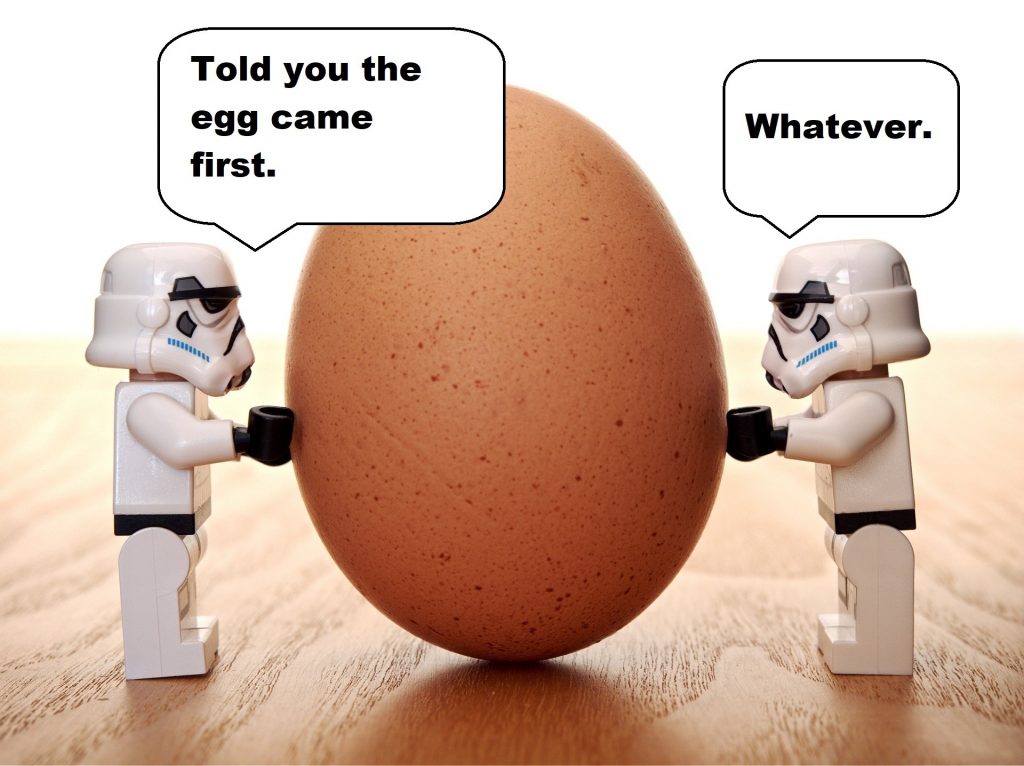You’ve taken the required exams. You’ve filled out online and paper forms. You’ve sent in your high school transcripts. You’ve maybe even requested some letters of recommendation to help seal the deal.
But as those admissions deadlines approach, you still have one thing left–the dreaded personal statement.
Sure, you’re just one hopeful student in a big sea of college applicants, but that doesn’t mean you can’t stand out. And this post will show you how it’s done.
So without further ado, let’s tackle how to write a personal statement the right way.
In this post, I’ll walk you through just what a personal statement is, how to write one from A to Z, and some examples that can inspire you to get started.
What Exactly Is a Personal Statement?
Think of a personal statement, sometimes referred to as a statement of purpose or personal essay, as your chance to show college admissions officers why you’re a great fit for the school and perhaps even the program to which you’re applying.
It’s not unlike a cover letter you’d submit with a job application.
A personal statement also allows you to show admissions officers that you’re more than just grades and test scores.
It’s an opportunity for admissions officers to see who you are as a person, what you can bring to the campus community, and how your experiences have led you to choose their school.
Often, when you sit down to write a personal statement, you’ll spend about one to three pages answering a question or prompt. Check out this blog post to see some some examples of what you can expect when this is the case.
Pre-work
Your personal statement will turn out much better if you follow these important steps before typing away at the keyboard. If you need to brush up on the essay writing process in general, this post can also help you out.
Careful review
Get out a notebook or open up your laptop, and get ready to take some notes or create some outlines. This will ensure that your materials stay organized. You’re probably not going to be writing just one personal statement to send to all of your prospective schools.
You read that correctly–there is no “one-size-fits-all” approach to writing personal statements. Admissions offices tend to have different guidelines or items they’re looking for in their instructions or prompts.
While you can probably reuse some of the main points in each of your personal statements, you’ll want to make sure that whatever you’re writing adequately answers the prompts given.
The most effective way to go about this is to carefully read the instructions on the statement of purpose submission form and make sure you clearly understand what’s being asked of you.
- What specific questions does the form ask?
- What situations or times in your life do the admissions officers want to know about?
Once you understand these guidelines, write them down in your notes or outline. Also take notes about what situations will apply to the questions/prompts and what you could leave out.
Web sleuthing
You’ve no doubt looked up information about certain topics and people online or in your favorite social media apps. It’s time to put those internet search skills to good use!
Each school you’re applying to has a website, which you’ve probably already used to start your application. A quick Google search can help you find each school’s mission statement.
One of your goals in a personal statement is to show admissions officers that your values and objectives make you a good fit for their community.
Check out this example of a mission statement page from The Ohio State University. Note some of the key buzzwords on this page:
- Knowledge
- Excellence
- Leaders
- Diversity
- Inclusion
- Access
- Innovation
- Collaboration
- Multidisciplinary
These values are what this university is looking for in its students. If you were applying here, you would cater your personal statement to show how you–as an individual and as a student–have and will uphold these values.
Because the mission statement of each school on your list will vary in values and goals, you’ll want to make sure that your personal statements shift focus to show that you represent the relevant items for each respective school.
What should you write about?
Questions/prompts on personal statement forms will give you a good idea of what to specifically focus on in your writing. But it’s also a good idea to brainstorm about what you have in your personal statement toolbox.
Alternately, some personal statement forms may not have any specific prompts or questions, which gives you the freedom to tell your story however you want. But that may leave you wondering where to start.
In either case, start making a list of the following, and you’ll have plenty of material to work with when you sit down to write the personal statement.
- Awards or honors from your current or past schools
- Job promotions or special responsibilities
- Organizations you may belong to (clubs, church groups, etc.)
- Any volunteer experience you may have
- Any events or workshops where you attended or presented material
- Your specific goals
- Your top values
- Any challenges you may have faced and overcame
Can I get a demo?
Before we dive into the structure of your personal statement, it’s a good idea to see what one looks like. This site has quite a few helpful examples of personal statements and even explains why they are successful. You can also check out a few annotated examples here.
With that out of the way, now we’re ready to dive into the how of how to write a personal statement.
How to Write a Personal Statement: The A to Z of Structure
When you think about how to write a personal statement, consider it as being a small structured essay that tells a little story about you. It won’t be unlike the five-paragraph essay format that you may already be used to writing.
Admissions officers also want to determine how strong your writing skills are, including how well you can start with a main idea and see it through to a meaningful end.
So like any essay, your personal statement should have an introduction that hooks the reader, a thesis, supporting paragraphs, and a conclusion that ties everything together. Let’s break these down in order.
Introduction
The introduction is probably the most important part of the personal statement. This is where you will try to hook your readers’ attention so that they’re ready to go along for the ride and read the rest of your statement.
To do this, focus on writing an honest and concrete sentence that shows off your personality. Start with the story that is unique to you.
Sometimes this can be difficult because not everyone’s life is very dramatic. But don’t let that discourage you. Even your night shifts at a fast food restaurant can be good fodder for why you want to get into a school or specific program.
Avoid vague language and clichés. Being specific to your experience is important here.
Bad opening sentence:
This summer was when everything changed, and I knew what I wanted to do.
Better opening sentence:
As a Cleveland Aquarium volunteer, I was responsible for an injured octopus’s feeding schedule, an experience that triggered my interest in marine biology.
The second sentence is better because it focuses on a specific scenario that gives a clear reason that the writer wants to pursue a specific goal. The first sentence is vague and could have been written by anyone. Being specific is key!
In the next couple of sentences, go into further detail and provide some context around the situation you’re describing.
Now is the time to craft your thesis. It will be the main point of your personal statement, and everything else you write will work to support it.
Body paragraphs
Because personal statements only allow for one to three pages of writing, you’ll want to focus only on one or two topics in your body paragraphs. And they should be absolutely relevant to the ideas in your intro.
Whether you’re writing a general personal statement or answering a prompt, make sure you don’t lose focus. You don’t need to tell your life story, and you don’t want to appear as though you’re rambling without purpose.
Start with the ideas in your intro and move forward.
- What effect did that formative experience have on you?
- What about your background, personality, and ambitions make you want to attend an institution of higher learning?
- What goals do you have for yourself?
As you write, these are the items you’ll want to focus on. And you’ll want to make sure they all tie into the thesis or main idea. You want admissions officers to see how your experience has led you to their particular school.
Conclusion
Now that you’ve made it this far, don’t let your writing come to an abrupt stop! It’s time to finish the personal statement with a conclusion paragraph.
A straightforward way to bring all of the ideas from your intro and body paragraphs together is to have them work toward why you want to attend the particular school.
In this section of your personal statement, summarize your overall experience and traits while saying how and why they have led you to the school to which you’re applying.
- What does the school (or program) have in common with your goals and values?
- What will you aspire to be as a student there?
Now that you know how to write a personal statement, it’s also important to know what you can (and should) leave out.
What You Can Leave Out
Now that you know all the great things you should put into a personal statement, you may be wondering what you should avoid. These items tend to hurt personal statements in the eyes of admissions officers.
Repeating information from your application materials
Now is not the time to talk at length about your grades and course history. This is your opportunity to show admissions who you really are.
Opinions about religion or politics
These items are not totally off-limits if they relate to your story in a productive way. But strong opinions about either may offend the reader–you don’t know who will be reviewing your writing.
A grab for sympathy
Writing about a difficult experience, how you personally dealt with it, and the lesson it taught you is perfectly fine! However, don’t write in a way that asks for readers to feel sorry for you. Chances are, they will not.
Humor
As much as we all like a good joke, leave out the funny stuff. If the admissions officers suspect you’re not taking your personal statement seriously, then neither will they.
Praise
Don’t tell the admissions officers how great the school is–they probably already believe this about the school. You’ll just be wasting precious space in which you could be telling them more about you and what makes you great for the school.
Fancy fonts and funky formats
Admissions officers may be instructed to just throw out applications that don’t follow the rules, so don’t chance it! Be sure to read the formatting instructions on each application form, and set your font style and size to match.
Before You Submit…

Still think you need to see some examples of personal statements before getting started? Check out Kibin’s essay database!
Make sure you get an early start on this process so that you’ll have plenty of time to turn in a well-thought-out, well-written, and polished personal statement. This definitely includes proofreading and revision because strong writing always stands out.
And when it comes to editing, you have a few options:
- Review what you’ve written (always!) to make sure that the information is accurate, clear, and void of errors.
- Have a friend read over your work and listen to you read it aloud.
- Take advantage of a service or guidance counselor (if your school has one) who can give you extra advice.
And as always, the pros at Kibin are here for you 24/7 to help that personal statement go above and beyond. They can help you make sure that, when your application is next in line, it will truly stand out above the rest!




